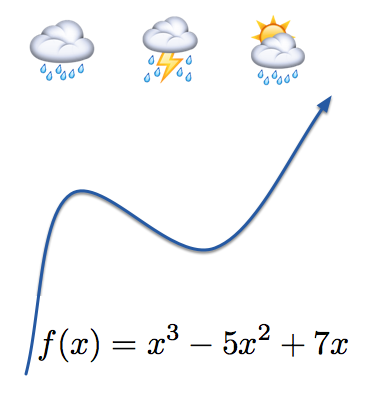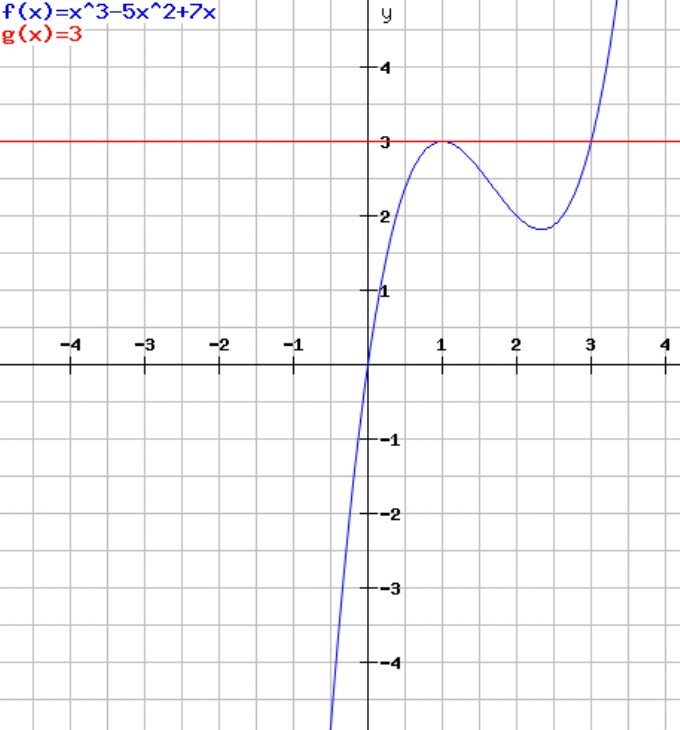Raining in Flatland

In flatland, everything is two-dimensional. There is a container with the shape of a curve
If gravitational force is parallel to -axis, what is the maximum amount of water it can contain?
Give your answer to 3 decimal places.
The answer is 1.333.
This section requires Javascript.
You are seeing this because something didn't load right. We suggest you, (a) try
refreshing the page, (b) enabling javascript if it is disabled on your browser and,
finally, (c)
loading the
non-javascript version of this page
. We're sorry about the hassle.
Drawing the graph: F ( x ) = x ( x 2 − 5 x + 7 ) Since discriminant of x 2 − 5 x + 7 is negative therefore graph will intersect x axis only at origin. F ′ ( x ) = 3 x 2 − 1 0 x + 7 = ( 3 x − 7 ) ( x − 1 ) ⟹ graph is increasing in ( − ∞ , 1 ) and ( 3 7 , ∞ ) while its decreasing in ( 1 , 3 7 ) hence attaining a local maxima at x = 1 and a local minima at x = 3 7 along with having horizontal tangents at x = 1 and x = 3 7 . Hence the graph would look like. Clearly required region is :
∫
1
3
(
3
−
(
x
3
−
5
x
2
+
7
x
)
)
d
x
=
3
4
≈
1
.
3
3
3
Clearly required region is :
∫
1
3
(
3
−
(
x
3
−
5
x
2
+
7
x
)
)
d
x
=
3
4
≈
1
.
3
3
3